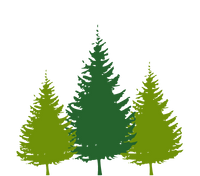
Wasps are often polarising among people – the Marmite of the insect world. However, they actually hold significant value to human beings and ecosystems alike.
Renowned for their role as pollinators, adult wasps primarily feed on nectar and in the process, transfer pollen between plants. Their nests serve as safe havens for larvae of various pollinating hoverflies, such as the impressive Hornet Hoverfly (Volucella zonaria).
More than just pollinators, wasps are pivotal in natural pest control, hunting numerous invertebrates including flies, aphids, and caterpillars to feed their larvae. They are also skilled architects, constructing intricate nests from chewed wood that resemble paper.
The life cycle of a wasp begins with the queen constructing a petiole, a cylindrical column, which she coats with an ant-repelling chemical. She starts the nest with a single cell, which she then surrounds with six additional cells, forming their characteristic hexagonal shape. As she builds up to 20-30 cells, she lays an egg in each. The queen then splits her time between feeding the hatched larvae and expanding the nest.
As the larvae mature, they encapsulate themselves in their cells until they emerge as adult workers. These workers then forage for protein-rich food for the larvae and sugary substances for themselves, continuing to expand the nest. In a reciprocal arrangement, the larvae excrete a sweet, honey-like substance as a reward for the workers.
Eventually, the nest reaches a point where it can house 5,000-10,000 individuals, allowing the queen to focus solely on reproduction, supported by the workers. By late summer, the nest hits peak capacity, predominantly filled with adults and few larvae. It is then that new queens and male drones are produced; after mating, the queens seek shelter to overwinter and the drones die off, similar to the lifecycle of bees and ants.
Worker wasps are generally around 12-17mm in length, with queens larger at about 20mm. Workers live only a few weeks, but queens can survive up to a year, hibernating and laying eggs in the following summer. Each colony lasts a mere year, dissolving with the onset of winter after the new queens have left.
Wasps have stingers used both for hunting and defending their nests. They navigate by recognising large objects, often circling humans to map their location. Unfortunately, this geo-location process can be frustrating if humans move around, potentially leading to distressing encounters.
As autumn approaches and the new queens depart, worker wasps lose both their purpose and their primary food source, leading them to venture towards human activities where sweet substances like jam and beer are prevalent. Misunderstandings occur when wasps, drawn to these sweets, feel threatened by human movements and react defensively by stinging.
Understanding the complex life and ecological contributions of wasps could foster greater appreciation and coexistence, perhaps easing the contentious relationship between humans and these misunderstood insects. If there were a metaphorical wasp welfare state we might just find ourselves more accepting of their presence.
——————————————————————————
At Natural World Fund, we are passionate about stopping the decline in our wildlife.
The decline in our wildlife is shocking and frightening. Without much more support, many of the animals we know and love will continue in their decline towards extinction.
When you help to restore a patch of degraded land through rewilding to forests, meadows, or wetlands, you have a massive impact on the biodiversity at a local level. You give animals a home and food that they otherwise would not have had, and it has a positive snowball effect on the food chain.
We are convinced that this is much better for the UK than growing lots of fast-growing coniferous trees, solely to remove carbon, that don’t actually help our animals to thrive.
This is why we stand for restoring nature in the UK through responsible rewilding. For us, it is the right thing to do. Let’s do what’s right for nature!
Donate today at https://naturalworldfund.com/ and join in the solution!

